In Europe, a rule has long existed to drink at least 2 liters of still water daily, regardless of the number of first courses eaten and coffee, tea, and other drinks drunk. This norm is sacredly observed by people of any professions and any material wealth. In our country, people are also gradually becoming attached to this rule, but not everyone knows what water is better to buy. There are so many of her on store shelves that her eyes run wide. Few meticulously read the information on the labels, and besides, it is often served in such a small print that you need to take a magnifying glass. Therefore, among the abundance of brands, some choose the most famous, others choose the one that is cheaper, believing that the water is all the same. This is not entirely true, because there is water of the highest category and the first, and among them there is natural and purified, which is far from the same. So what kind of water do you need to take in order to benefit from it? Let's get it right.
Why does the body need water
Even children know that we are all 80% water. Every day, 500 ml is lost with sweat and breathing, 1500 ml with urine. Here, in order to restore losses, and you need to pour in 2000 lost ml, only it should be high-quality drinking water. All this is true, but only in part.
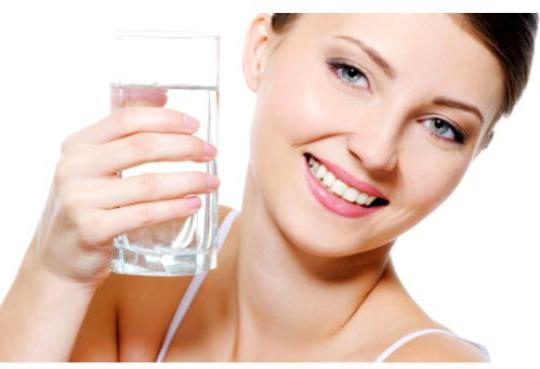
Firstly, the figure of 80% is average, but in fact, depending on age, weight and other indicators of water, each of us has a different amount. Secondly, we lose it in different ways too. In the heat more, less in the cold, while moving more, lying on the couch less. That is, someone needs to drink 2 l of it, and for someone, 3 will not be enough. But why drink it? Is it only to recover losses? It turns out that water is able to easily dissolve both organics and all kinds of chemical compounds, such as salts. Getting into our body, it takes in a lot of harmful substances that are safely excreted in the urine. Thus, the natural cleaning of our systems from toxins and other muck occurs. Of course, the best drinking water, that is, chemically purer, copes with this task much more effectively. And another important function of water is that chemical reactions take place in it and complex complex compounds are formed, without which we cannot live. That is why the loss by our body of only about 10% of the fluid can end very sadly.
Types of Drinking Water
Now they write a lot about what drinking water of the highest category is. The rating of these products partly helps to find out which brand you need to buy. It is based on all sorts of analyzes and tests that determine the compliance of the chemical composition of water with GOSTs and SanPiNam. But the results of such checks on labels are rarely displayed. But there almost always there is evidence that water was produced in such and such a region from such and such depths, and other data that are not clear to everyone are reported. To clarify the situation, or perhaps even further confuse it, we note that in nature there are approximately 476 modifications of water, depending on which isotopes of oxygen and hydrogen make up its molecule. Naturally, the properties of these waters are different, and not all of them are equally healthy. Fortunately, not all modifications can last long enough, and information on them is not displayed at all on the labels. What kind of water can I use for drinking? Its most famous species are:
- light
- heavy
- soft;
- tough;
- underground (extracted from wells and aquifers);
- mineral;
- plumbing;
- peeled.
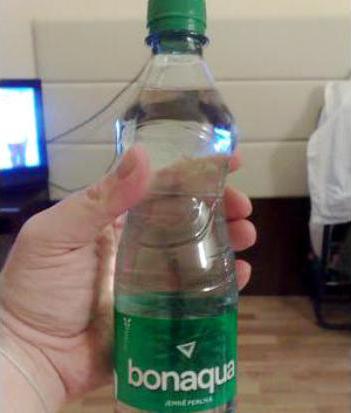
Drinking water categories
Apart from technical, which is not considered in this article, there are two categories of water - the highest and the first. In each country there are GOSTs and SanPiNs for bottled drinking water that regulate their taste, color, chemical composition, transparency. Drinking water of both categories, unless it is healing mineral, must be transparent, odorless, impurities and sediment, otherwise it can not be consumed at all. Regarding the chemical composition, higher requirements, of course, must be met by drinking water of the highest category. The rating, taken into account by many buyers, shows which of the quality brands of water passed the quality standards. It is these products that are becoming the most popular. Now about 700 items of drinking water are produced. It is clear that all of them are difficult to verify, and unscrupulous manufacturers can write anything on the label. How can a simple person distinguish quality water from a fake?
Firstly, for the price. If water is really produced in an ecologically clean region, and even from a decent depth, then it has high production costs. Therefore, it can not be cheap. If the water is of poor quality, the manufacturer does not run the risk of setting a high price, since it is very important for him to quickly sell his goods and get benefits before a possible check.
Secondly, according to the information on the label. On it, if really water of the highest category, the place of its production, the address and website of the manufacturer, the chemical composition must be indicated. In reality, almost all the elements from the periodic table can be present in natural drinking water, but most of the chemical elements are so small that they are not taken into account.

Mainly indicate the content of such chemicals and compounds:
- potassium (up to 10 mg / l);
- magnesium (up to 20 mg / l);
- sodium (up to 100 mg / l);
- calcium (up to 20 mg / l);
- nitrates (up to 45 mg / l);
- chlorides (up to 100 mg / l);
- sulfates (up to 30 mg / l);
- bicarbonates (up to 300 mg / l).
Sometimes on the labels indicate the pH of the water, which should be in the range of 6.5-7.5. The mismatch of even one of these indicators does not give the right to assign the highest category to water.
Light and heavy water
The taste, color, smell and the one and the other are the same, but very different in usefulness. Numerous experiments have proved that the best drinking water, which has, among other things, high healing properties, is light. There are practically no impurities of deuterium (isotope of hydrogen) and other heavy elements in it, therefore, cleaning the body of toxins and all metabolic processes in it are better. Light water even helps in the treatment of cancerous tumors. Heavy water, in which deuterium atoms are attached to an oxygen atom, is harmless to humans if you drink it in small quantities. But there is no benefit from it. In nature, deuterium molecules exist in any water, from wells of whatever depth it is produced. It is logical that any drinking water of the highest category contains these molecules. A rating on this issue is not carried out, but choosing bottled water, you can buy products of well-established brands, and at home make this good, but ordinary water an easy way to freeze in the refrigerator and then thaw. What will melt, first of all, will be the cleanest drinking water in the world, which is most beneficial for health. And it is advisable to discard the remaining ice after such a procedure, since all harmful impurities will be collected in it.
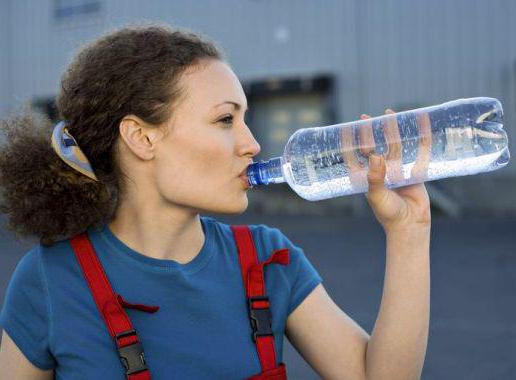
Soft and hard water
With these characteristics, the situation is simpler. Soft water or hard water - depends on the content of magnesium and calcium salts in it. In small quantities, you can drink both, but in large quantities, hard water can lead to the formation of kidney stones, and soft water can lead to problems with pressure. In everyday life , you can determine the hardness of water by eye. So, if there are too many salts of calcium and magnesium in it, there will be little foam when soaping hands, and if there is a shortage, it will seem that the soap does not wash off from the hands. But, buying water in a store, no one conducts such experiments. Yes, this is not necessary, because the content of hardness salts in water is strictly determined by GOST and must be indicated on the label. In different countries, the numbers may vary slightly.
In Russia, from 01/01/2014, water hardness is measured in degrees and is indicated by "° W" or in milligram equivalents per liter, of which in drinking water should be no less than 1.5 and no more than 2.5 units. Sometimes labels do not indicate stiffness, but the amount of calcium (Ca2 +) and magnesium (Mg2 +), as well as their salts (CaSO4, MgSO4, CaCl2, MgCl2). The amount of each salt is not regulated by GOST, it is only indicated how much they should be in total. If these norms are observed, it means that we may well have drinking water of the highest category suitable for everyday use. The rating, in order to be high, must take into account the content of other useful trace elements in it, especially nitrates. As for the magnesium-calcium tests, such promoted brands as “Aqua Mineral”, “Dombai” did not pass it, and there was a lot of chlorine in the water of the brands “Holy Spring” and “Shishkin Forest”.
Mineral water
Now mineral water is freely sold in any store, so many people buy it as ordinary drinking water, being sure that mineral water is any one where there are trace elements. In fact, mineral is called water, extracted only from certain aquifers and having a strictly regulated chemical composition. That's just this water of the highest category can have a rather unpleasant aftertaste, smell, and sometimes even color and sediment, which depends on the salts with which it is rich. It is important to know that, despite the rich (indicated on the labels) chemical composition, water is not considered mineral if it is a mixture of natural and artificially made.
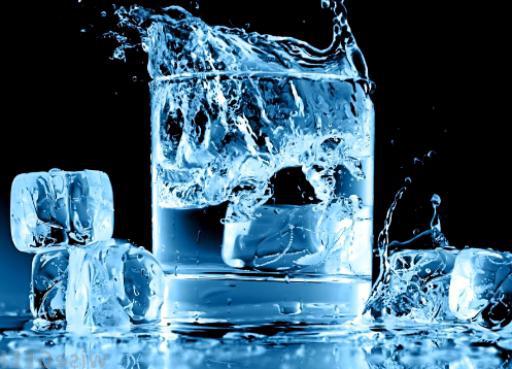
Water, which is a mixture extracted from various aquifers, will not be a good mineral water, but, unfortunately, this cannot be determined by the label. You can navigate here only by brand names. So, time-tested and having good consumer reviews, natural drinking water is Borjomi, Narzan, Essentuki, Mukhinskaya, and in Ukraine Mirgorodskaya, Kuyalnik, Polyana Kvasova. In composition, mineral waters can be sulfate, hydrocarbonate, chloride, mixed, and according to the concentration of nutrients, canteen (microelements in them up to 1 gram per 1 dm cubic), medicinal-table (microelements up to 10 grams per dm 3 ) and therapeutic. Only a dining room can be consumed daily without consulting a doctor.
Tap and purified water
Previously, bottled water, and still non-carbonated, no one bought, everyone drank tap water. Its purity also has the standards of GOST and SanPiN, therefore, in principle, it should be suitable for drinking in any quantities. Tap water in most countries is subjected to several stages of treatment: mechanical, coagulation, filtration, aeration, sterilization or, in other words, chlorination. Despite such a serious technology, the rating of drinking water from a faucet is one of the lowest, because it is almost always present in large quantities of salts of various chemical elements, these elements themselves, such as chlorine, and sometimes pathogens. Therefore, we no longer want to drink such water.
Savvy entrepreneurs have figured out how to profit from it while doing good. The method is simple and consists in additional cleaning. The costs of the whole process are relatively low, therefore the price of the product is small, although the label may indicate that the water is crystal clear, mineralized and generally the best.
However, a reasonable buyer should understand that the best bottled water cannot cost 5-10 rubles per one and a half liters, even if it says “spring” or “artesian” on it. For comparison, bottled water extracted from pure natural sources of the Alps, pulls 70-80 rubles per liter of baklaga.
But what is purified water? We use two methods: trustworthy among the people, albeit little understood, reverse osmosis and mysterious coagulation. Let's see how they work.
Reverse osmosis is the passage of water through several membranes with a microscopic texture, on which all the elements dissolved in water remain one after another. The result is almost perfectly pure, similar to distilled water. It is not useful for health, since, having got into the human body, it begins to replenish the useful substances removed from it, taking them from our body. To prevent this from happening, manufacturers enrich it again, so the composition of trace elements indicated on the labels of such water may be correct, but the highest category is rarely assigned to it.
Coagulation consists in adding a coagulant (clarifier) to ordinary water, which precipitates certain chemicals and trace elements. After that, the water is separated from the precipitate and bottled. The process is so cheap and simple that about 70% of all manufacturers use it. So, buying the cheapest drinking water, you can stumble upon a product that is not particularly suitable for health.

Water from the bowels of the Earth
Wells of various depths (even more than 50 meters) are available for many Russians in the yards. It would seem, why should they buy bottled natural water, if they can use their own, also natural. However, chemical analyzes of such a water show that the trace elements in it are not two, or even ten, but several dozen times higher. It is clear that you can’t drink it. The problem is that the entire thickness of the earth’s crust, like cake from cakes, is composed of geological layers - loams, sandstones, limestones and others. The closer to the surface of the earth and the closer to settlements, especially to industrial centers, the more in the layers of chemical elements, garbage, waste products of people and animals. All this easily falls into shallow water beds, so you can use them for drinking only after thorough cleaning.
Unsuitable for drinking and the so-called high water generated during floods, river spills. Nevertheless, the bowels of the Earth can give us clean and healthy water, only to get it you need to drill artesian wells. In different regions, their depth ranges from 100 to 1000 meters. The necessary water should be between the waterproof layers of the rocks and be there under pressure, so it beats a fountain from a drilled well. In many respects, artesian water is the best bottled water available in stores, despite the fact that it also contains some salts and trace elements. Manufacturers, as a rule, indicate on the labels from which depth and in which region their product is extracted. If it is, for example, the Carpathians, the Urals or the Alps, of which no one doubts the ecological purity, we can safely say that such drinking water is of excellent quality. There may be dozens of brand names. Which one to choose if there are no known and popular for sale? The advice here is only one - trust the information on the label.
Carbonated water
It is believed that soda is better than plain water quenches thirst, that it is more delicious and completely harmless. But is it useful? If we take European countries, for example, Greece, the founder of the rule on daily and obligatory drinking water, it’s almost impossible to find soda in one and a half liter, and even more so two-liter baklags. Such voditsa is sold for a maximum of half a liter glass bottles, not counting the classic soda.
We have water carbonated all in a row, adding carbon dioxide to it. It really changes the taste, and in addition, helps the salts to remain dissolved and not precipitate. That is why mineral waters are enriched with carbon dioxide before bottling, because there are a lot of salts in them. Should non-mineral water of the highest category be sparkling? And why should this be done if there are not so many salts in plain water to be afraid of their precipitation, and the taste should be good without carbon dioxide? The answer to these controversial questions may be the taste preferences of customers, many of whom like soda.
You can safely buy products of famous brands whose manufacturers value their name, but when buying cheap soda, it is worth wondering if there is anything good in it besides carbon dioxide. But high-quality sparkling water cannot be drunk in large quantities, since the CO2, which is part of it, activates the secretion of gastric juice, adversely affects enamel, and contributes to increased gas formation in the intestines.
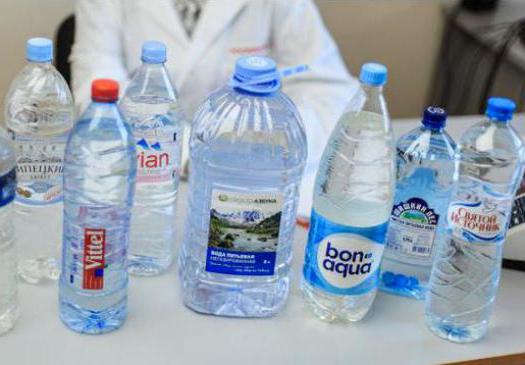
Rating of drinking water of famous brands
A single study, which would cover all the water available on sale, without forgetting the one intended for coolers, has not yet been carried out, therefore the rating of brands can be considered conditional, since it is based on checks made selectively. According to some reports, Bon Aqua water is the best, followed by the "Holy Spring", "Aqua Mineral", "Arkhyz". According to others, the “Holy Spring” and “Aqua Mineral” did not reach the highest category at all, and the first place was taken by the Nizhny Novgorod water “Dixy”. Second and third places went to "foreigners", the French Vittel and Evian. Not only in Russia, but also in Europe, it is water of the highest category. Customer reviews about it are excellent, but absolutely all respondents note a high price.
Domestic "Lipetsk pump-room" is a little cheaper, but there are less trace elements in it. According to the results of the inspection, Aqua Mineral turned out to be completely free of trace elements, that is, almost sterile, although the label does not indicate this. But the waters "Shishkin Forest", "Just the ABC", Crristaline, Aparan, "Holy Spring" and even Bon Aqua, bottled in Moscow, were blacklisted due to gross violations of quality standards and cheating customers.